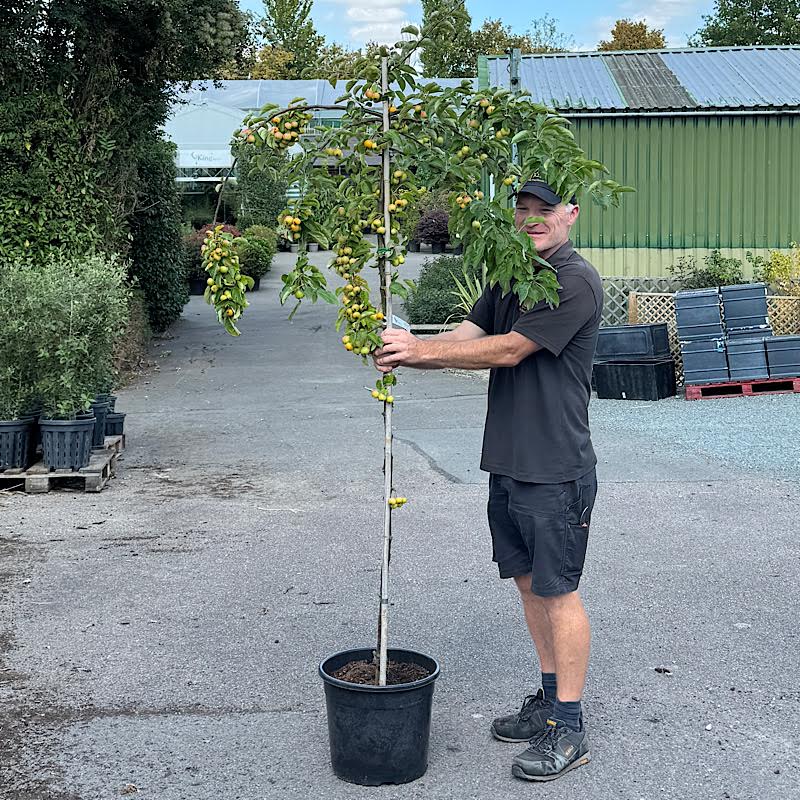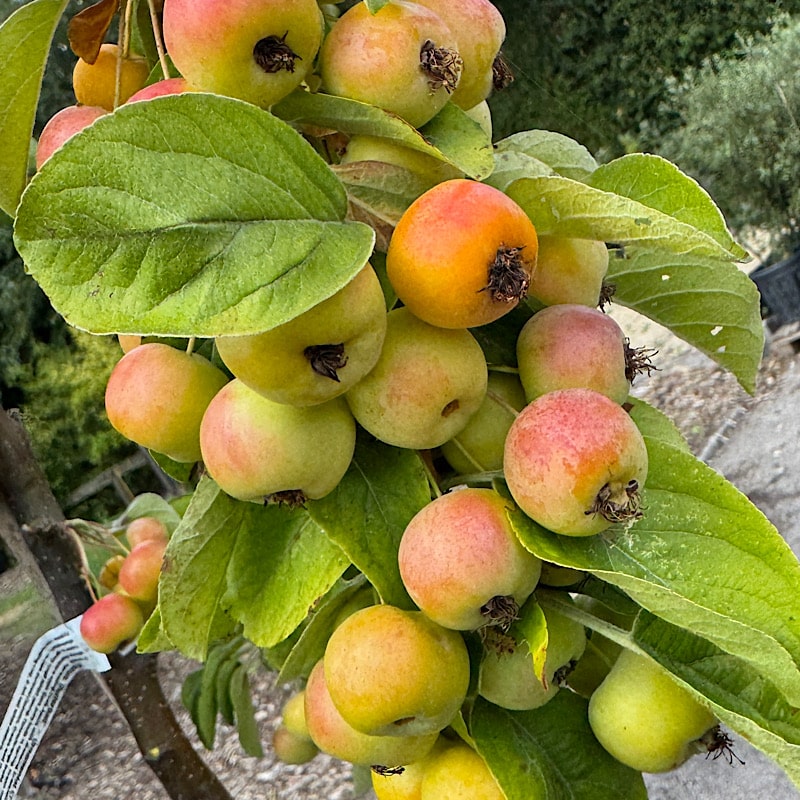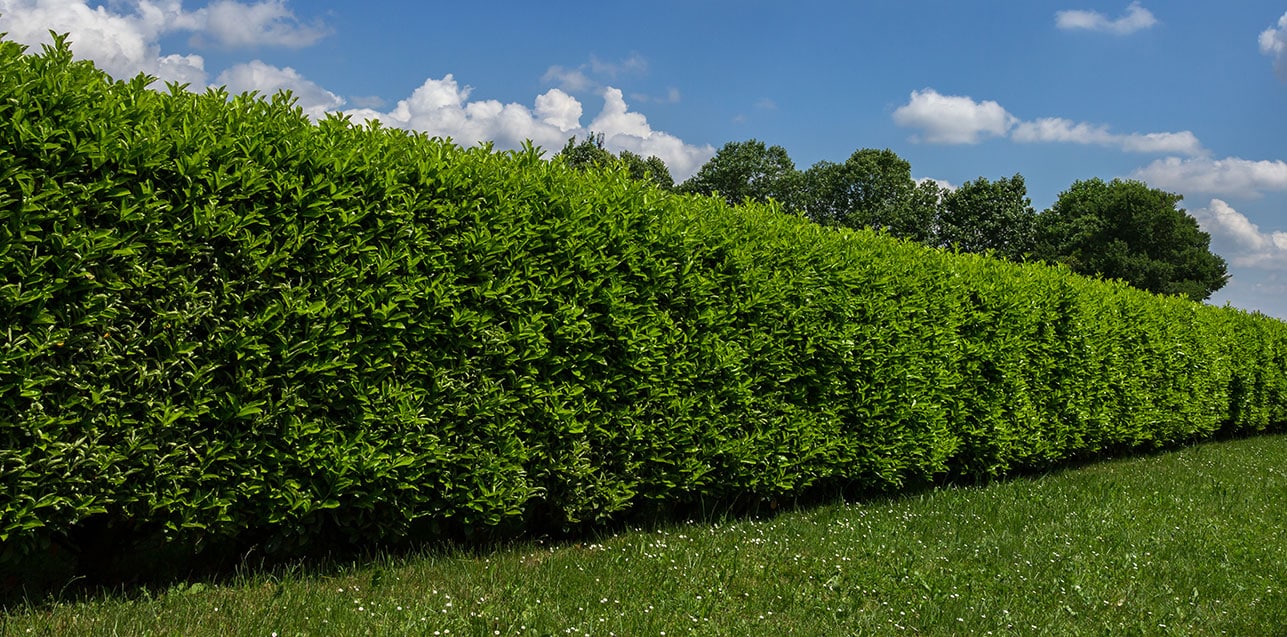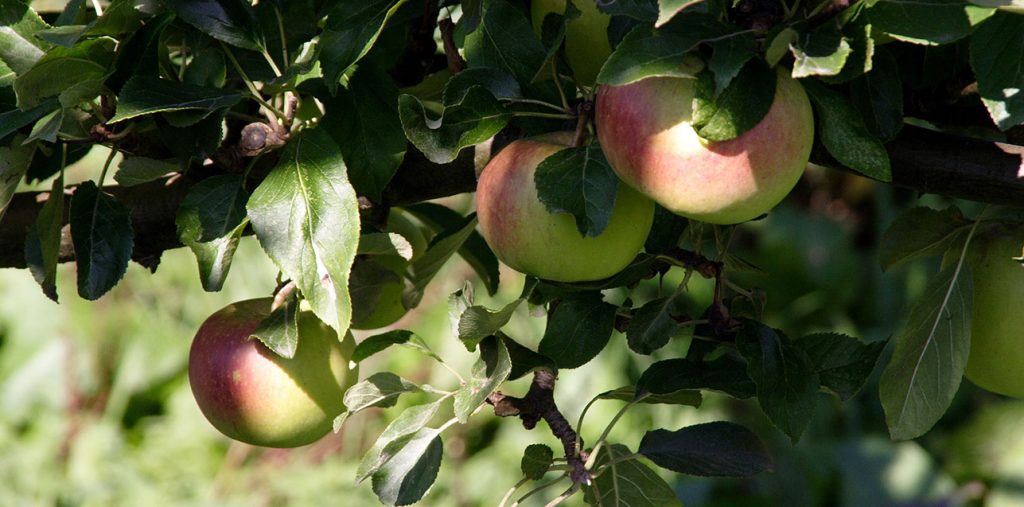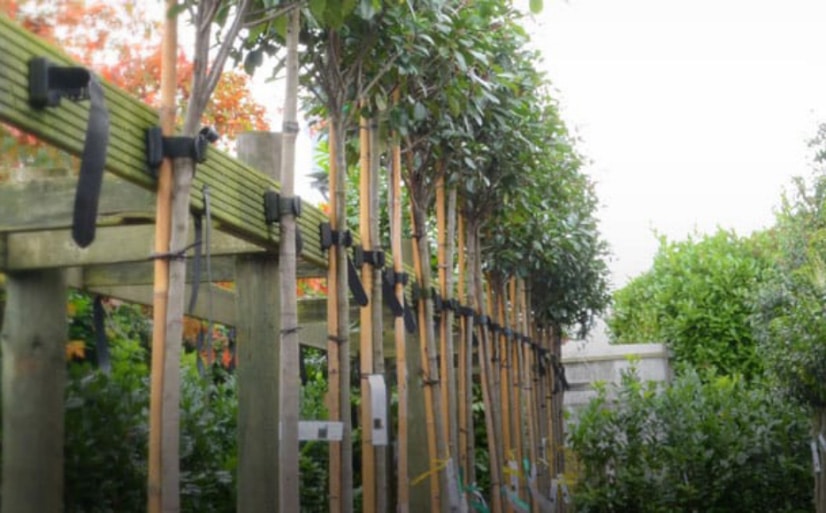At King & Co, we stock a wide range of Crab Apple varieties from the white-flowering ‘Street Parade’ to the rose-pink ‘Rudolph’. In this guide to Crab apple trees, we highlight the key benefits of planting Crab Apple trees and showcase some of our favourite varieties for your garden!
Why Plant Crab Apple Trees?
Crab Apple trees offer exceptional seasonal interest and stand out in any garden or landscape! Here is how they transform gardens throughout the year:
Spring. At this time of year, Crab Apple trees burst into bloom. Their branches fill with masses of flowers in shades like white, pink or red. These blossoms attract bees, butterflies and other pollinators, helping to support local wildlife!
Summer. Once their foliage has appeared, Crab apples can create shade, natural screening/privacy and structure to outdoor spaces.
Autumn. Many varieties produce clusters of ornamental berries that last well into winter. These fruits add bold colour and attract birds and wildlife. Crab apple leaves also turn to seasonal shades of gold, orange and red before they drop. These colours help to warm up gardens in the colder months.
1. Malus ‘Rudolph’
‘Rudolph’ is a small, upright tree that rounds with age. It has copper-red leaves that turn green in summer and yellow in autumn. It also has rose-pink flowers that bloom in late spring, followed by yellow-red crab apples. Renowned for its resistance to scab, this tree reaches a mature height of 5-7m. It suits gardens, borders, parks, and woodland.

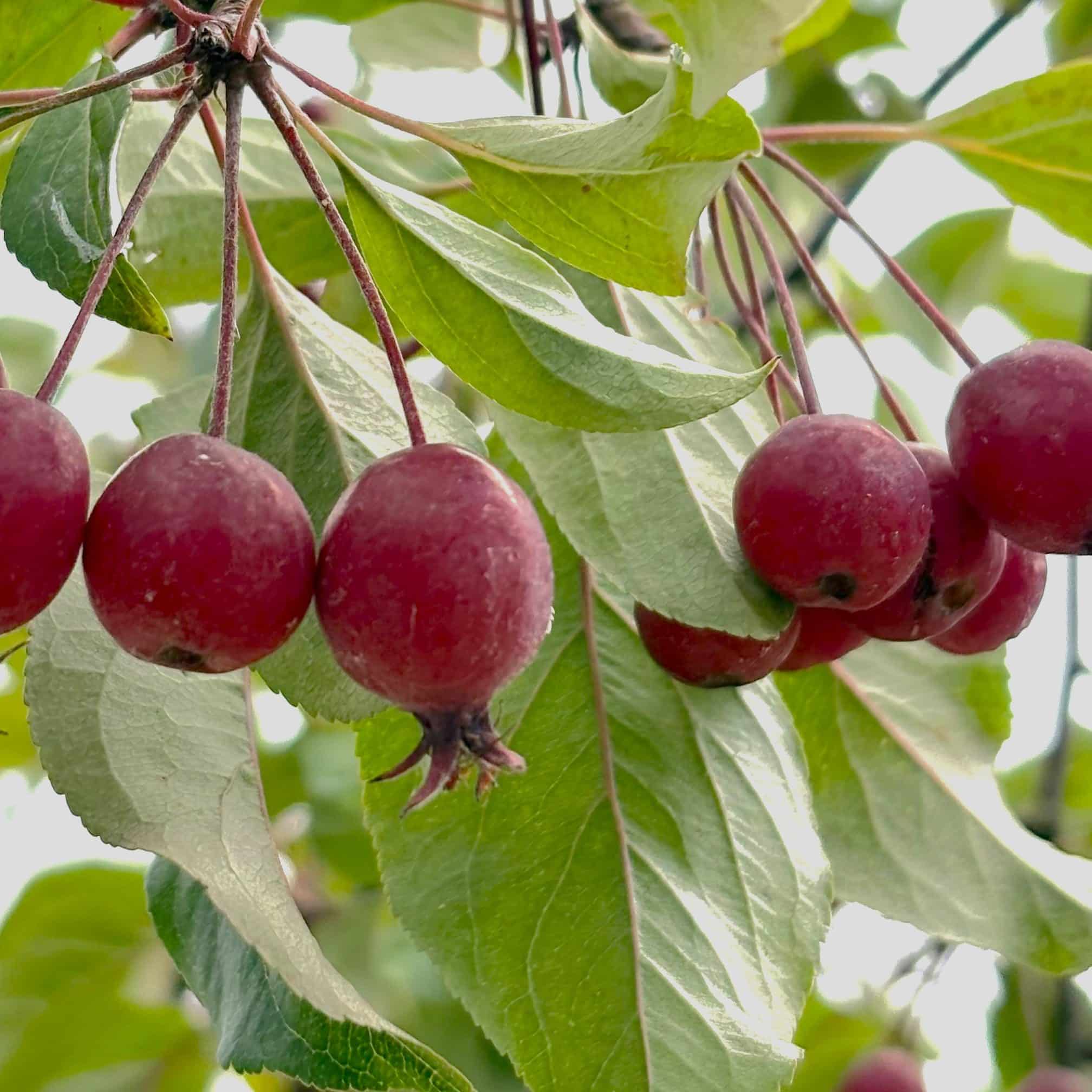
2. Malus ‘Street Parade’
Malus ‘Street Parade’ has dark green leaves that turn yellow in autumn. It also bears masses of white flowers in spring and glossy purple-red fruits in late summer. These fruits persist into autumn. This compact tree has an upright habit that matures into a graceful oval shape. It’s an excellent choice for structure, seasonal colour and year-round appeal.
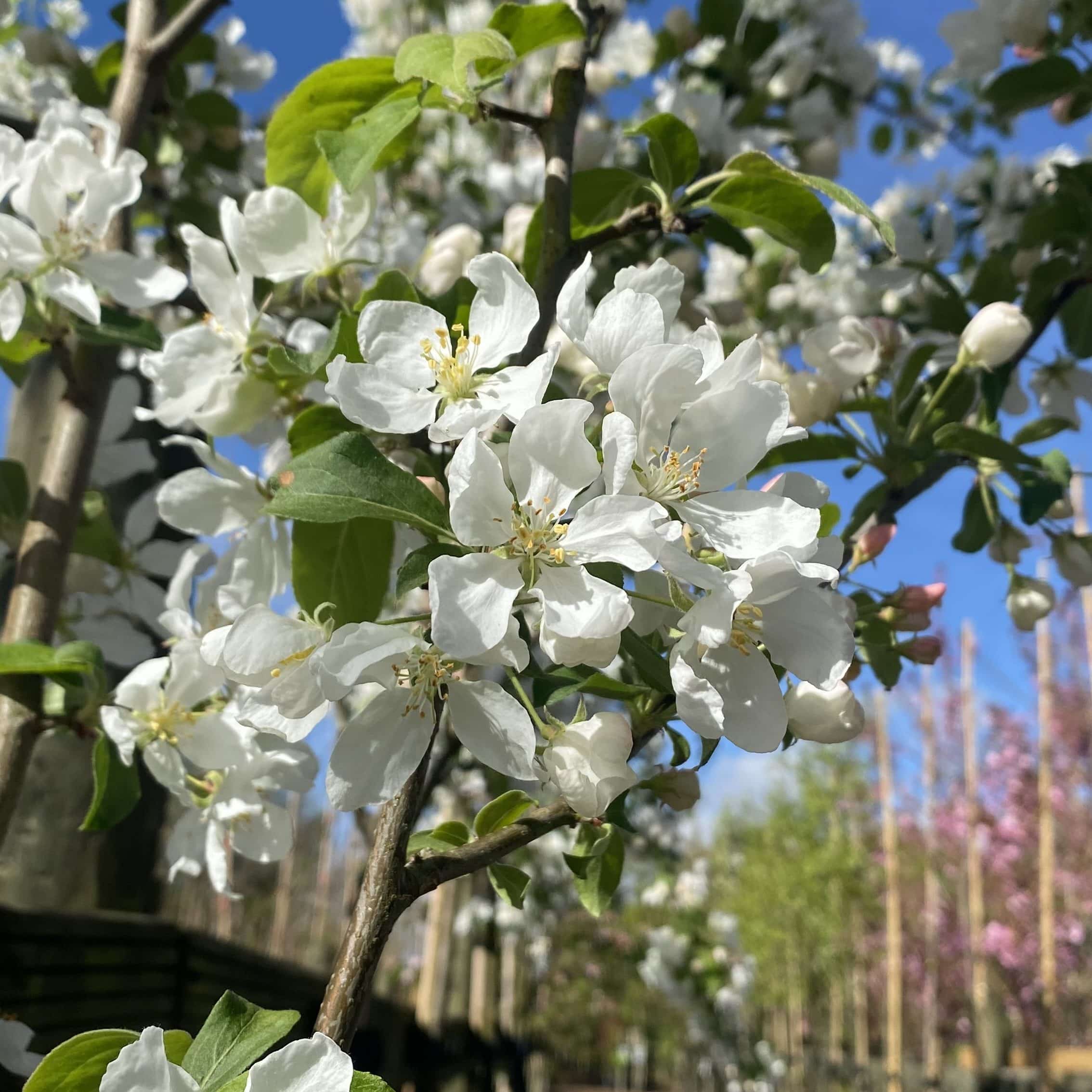
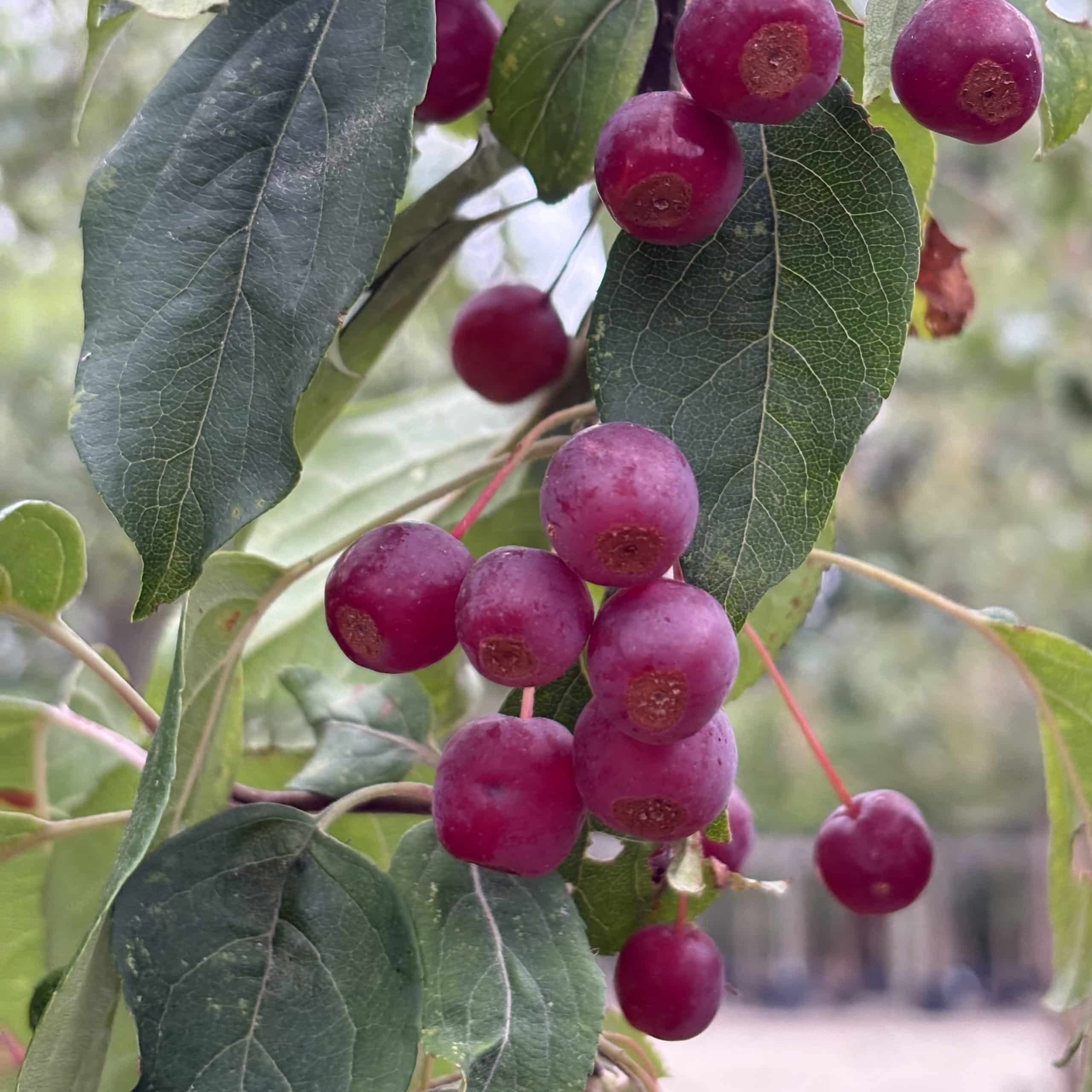
3. Malus ‘Red Sentinel’
‘Red Sentinel’ features bronze-tinted buds that unfold into oval, dark green leaves. In spring, it produces striking single white blossoms, while autumn brings clusters of glossy, cherry-like fruits. These fruits are vivid red and gradually deepen to a rich, dark crimson. Unlike many other trees, ‘Red Sentinel’ retains its fruit throughout winter, bringing vibrant colour to even the coldest months.
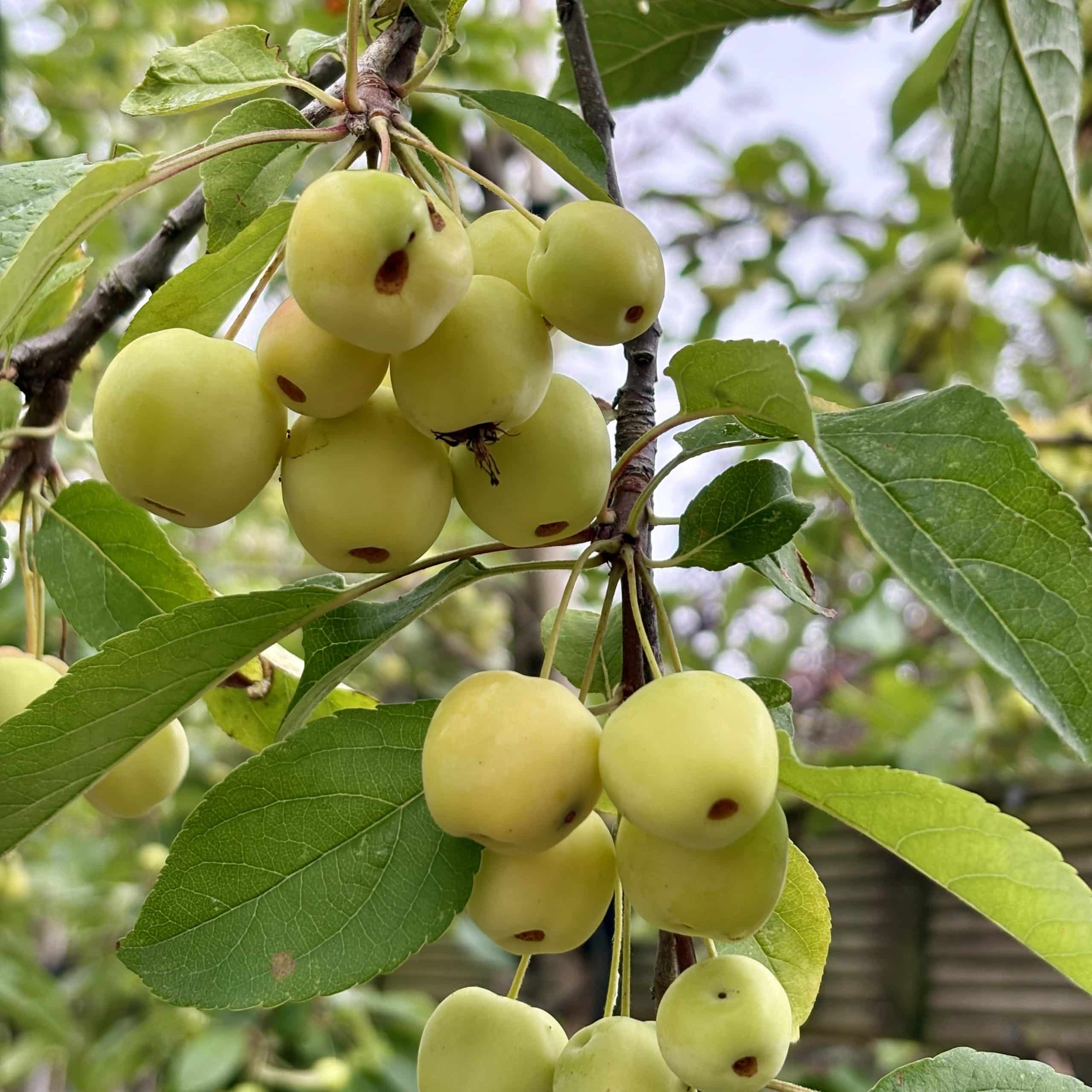
4. Malus ‘Butterball’
‘Butterball’ is a small crab apple tree with a rounded, weeping shape. Its green leaves start off greyish and turn yellow and orange in autumn. In late spring, pink buds open into lots of pale pink or white flowers. Small yellow-orange crabs then appear in autumn. The tree can grow 4–6 meters tall but often stays smaller because of its weeping shape. In years with lots of fruit, the branches bend even more.
